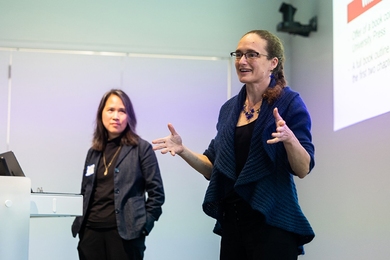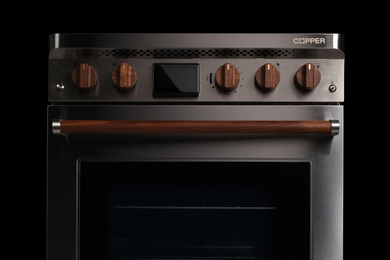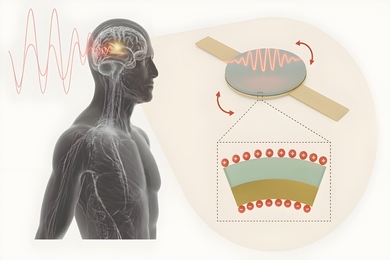Great strides have been made for women in science and engineering, but much more must be done in terms of overall perception of women's value, said Professor Mary Wyer of North Carolina State University during a Nov. 30 talk at MIT.
Wyer, a National Science Foundation (NSF) Advance Leadership Award winner, professor of psychology and women's and gender studies at North Carolina State University, spoke about her research on attracting women to study science. The talk was hosted by Ruth Perry, professor of literature and founder of the MIT Women's Studies Program.
One difficulty with drawing women into science is that histories of science and engineering rarely mention women's contributions, Wyer said in her hour-long lecture, held in Room 4-149. "If women are not visible in the curriculum, then there is a silent reiteration of the generic 'he,'" Wyer told the group of roughly 30 people. "We don't see images of women scientists enough."
Wyer spoke of advances women have made over the years, noting the Equal Opportunity in Science and Technology Act from 1980 as well as the increase in women in the sciences. Yet, she said, data that seemed to show a nearly even split between women and men who earn bachelor's degrees in the sciences have been "skewed" by psychology, a scientific field women enter more than, say, math, computer science, engineering or physics, where their numbers have "declined or remained flat," said Wyer. "The education equation is still scientist equals man," Wyer said.
In her studies of course work in the sciences, the image of the male scientist in his white lab coat prevails, Wyer said. To see how this might be changed, Wyer and several colleagues at N.C. State conducted an experiment, funded by the NSF, that integrated material from women's studies courses into a required N.C. State ecology class over three different semesters with three groups of students.
At the beginning of the semester, each class was given a survey designed to assess their knowledge of women scientists and their personal beliefs regarding women and science. Over the three semesters, one class received significant supplemental material on women's scientific contributions and on biases against women in science. The material was reinforced with lectures, quizzes and class activities.
A second course had similar material, but on a smaller scale. The third course acted as the control and had only surveys at the beginning and the end of the course.
As predicted in the hypothesis, by the end of the three semesters, students in the control course showed minimal attitude change towards women, while the other two courses showed changes commensurate with the amount of intervention they had.
The researchers concluded that limited curriculum from women's studies courses does not make a huge difference in attitudes. They also found that men and women have very different attitudes, with men less likely to feel comfortable with women in science.
To Wyer, these results showed a general ignorance of gender inequality and the "practices that perpetuate them."
"If we are to increase the visibility of women in science, we are going to have to educate the educators as much as the students," Wyer said.
A version of this article appeared in MIT Tech Talk on December 6, 2006 (download PDF).






